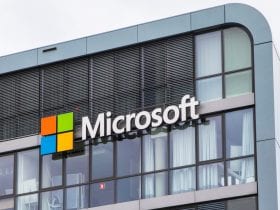The largest mining companies in the world, the likes of Rio Tinto, BHP, Anglo-American and Glencore, are worth tens to hundreds of billions of dollars. Global industry and manufacturing rely on them for the raw metals and minerals required to make everything from household appliances to modern cars and electronic devices.
However, if a new generation of mining start-ups and their investors are proven right, their days may be numbered.
Mining is an essential but controversial industry
Mining is both an essential and controversial industry. Every day, at mines around the world, in every populated continent, hundreds of thousands of miners descend to tunnels thousands of feet under the ground. Their job is to extract the huge quantities of raw metals and minerals the global population consumes.
It’s a notoriously hard, uncomfortable and dangerous job. Shafts and mine tunnels are cramped and temperatures of 40C are not unusual. There are hundreds of fatalities in mines every year and thousands of miners are injured, many seriously. And it’s not only in mines in developing nations. In the USA, 29 miners were killed in accidents in 2022.
Advances in robotics and other technologies such as AI will undoubtedly mean traditional mining will require less human labour in the years to come, with the most dangerous manual jobs likely to be replaced by machines first.
But that still leaves the environmental impact of mining, which is considerable. The list includes erosion, sinkholes, loss of biodiversity, or the contamination of soil, groundwater, and surface water by chemicals emitted from mining processes.
Electric vehicles are rightly seen as a big step forward towards more environmentally sustainable transport networks. But the process of extracting and mining the metals and minerals required by the electrification process, like lithium, cobalt and platinum, has a huge environmental impact on the areas the mines are found.

Aerial view of lithium fields in the Atacama desert in Chile, South America – a surreal landscape where batteries are born (I downloaded this image from a Shutterstock subscription I have so you can legally use it on the website)
It is a case of sacrificing the ecology of particular regions for the world as a whole. But some argue that the impact of mining for the metals and minerals used in modern batteries makes it questionable if electrification is even really better for the environment than the burning of fossil fuels.
Space mining start-ups believe mining moons and asteroids can give us everything we need with none of the human cost and environmental damage
Space mining startups believe they have the answer to the mining problem. Asteroids can contain huge quantities of the metals and minerals we need for modern battery and electronics technologies. And in densities of up to thousands of times greater than on Earth, making the mining process far more efficient.
Mining asteroids and bringing the metals and minerals back to Earth also has no ecological impact on our own planet – or just the footprint required to get the technology into space and the mined treasure back.
But with the “near Earth” asteroids identified as having high concentrations of metals and minerals still about ten million miles or a 6-month journey away, can we really do it? Startups who want to will have to get a mining rig to an asteroid identified as metal and mineral rich. The payload will also need to include all the technology and robotics needed to get such a rig and refinery operational to an asteroid. As well as bring the heavy cargo back to Earth.
The technology and logistics involved in space mining don’t sound like they should be feasible yet or even in the immediate foreseeable future. But space mining startups are already raising millions of dollars from investors they have convinced it can be done. And will be achieved soon enough for them to have a realistic prospect of realising a return on the investment.
2022-founded AstroForge is one of several startups raising investment for space mining
The Huntington Beach, California-based startup AstroForge was founded just last year and has raised about £10 million in seed funding. It has established a partnership with the British satellite startup OrbAstro to build a spaceship with an onboard refinery it plans to send into lunar orbit. From there the spaceship will launch itself into a 6-month journey.
The startup has identified an asteroid it believes is 1% platinum – 1000 to 10,000 times the densities mined on Earth. When AstroForge’s spacecraft arrives at its destination, a sophisticated laser-based excavation system will break off lumps of the asteroid. They will then be fed through the refinery to separate out the platinum.
Once the refinery has reached its capacity of 1200kg of platinum, worth about $80 million at last year’s average spot price and twice that at 2013 prices, it will blast off from the asteroid and begin its long journey back to Earth. The whole operation, including return route space travel and mining, is expected to take about 2 years.
AstroForge is cofounded by Matt Gialich, formerly of Richard Branson’s Virgin Galactic and e-scooter startup Bird (which went from zero to unicorn startup in the record time of just nine months. Bird is currently worth $30 million, is an icon of the recent zero interest rate-fuelled tech company valuations bubble, and likely to be de-listed from the New York Stock Exchange in the near future.
But Gialich also says he learned a lot at the company, especially the process of going from design sketches to manufacturing 800,000 e-scooters in less than a year. And he met AstroForge’s other cofounder Jose Acain at the startup. Acain was, like Gialich, also in the pioneering private space sector before joining Bird, spending 4 years with Elon Musk’s SpaceX in engineering roles.
Space mining startups have been too early and failed before – is the new cohort different?
Quoted by space.com, Angel Abbud-Madrid, Director of the Center for Space Resources at the Colorado School of Mines in Golden, Colorado, describes the first wave of space mining startups ten years ago:
“A decade ago, people got excited and there were those declaring that the first trillionaire was going to be made in space in those years.”
“They didn’t succeed and their plans were very ambitious, too far out, and just didn’t happen.”
Have enough things changed to mean investors are not literally blasting their millions and billions into outer space, never to be seen again, this time around too?
One big difference is the progress made by private satellite launch companies like SpaceX, Amazon founder Jeff Bezos’s Blue Origin and Rocket Lab since then. Between them, they launched 97 rockets into space during the first half of this year and have brought prices to send something into orbit down to about $1000 a pound (lb.).
That’s about 30 times what it used to cost when the only option was often NASA’s Space Shuttle and has completely changed the economics of space-based research and enterprise – especially private enterprise. The huge drop in the cost of getting things into orbit in just the last year has suddenly made a lot of previously untenable space economics viable, or potentially viable.
Extensively mining of the moon will possibly come sooner than asteroids unless AstroForge or one of its competitors like TransAstra, Karman+, or the Asteroid Mining Corporation, beats the odds to show the latter is possible and financially viable.
But space mining, especially of the moon, involves complications beyond technology. There is a UN Outer Space Treaty that broadly outlines principles around what nations and private companies can and can’t do in space. However, disputes will surely arise and have to be managed with diplomacy until enough experience is built up to know what a longer-term rule book on economic rights in space should look like.
The first operational space miners will work at the frontier of a cosmic Wild West. Mining the moon will require greater diplomacy and at least a loose set of rules to prevent the risk of conflict. But if a private company is able to reach an asteroid six months away and land mining equipment and a refinery on it, then fly a cargo of valuable metals and minerals back to Earth – who is realistically going to tell them they can’t?
But is it genuinely possible to mine asteroids with today’s, or even tomorrow’s, technology?
Joel Sercel, founder and CEO of TransAstra, another California-based space mining startup, believes so. At least in theory.
“Several breakthroughs need to take place technically to enable asteroid mining. We feel we’ve put all those to bed.”
He told Space.com TransAstra has blueprinted the transportation and equipment to get the job done, and “to actually process the asteroid in a meaningful way”.
His company has developed software that works with relatively cheap commercial telescopes in the California and Arizona deserts to identify target asteroids at a fraction of previous costs. They are looking for easily accessible asteroids that are small – roughly 15 to 50 feet in size and say they can pinpoint hundreds of times more a year than previously conducted asteroid surveys.
The startup’s work in this area has received financial backing from the NASA Innovative Advanced Concepts (NIAC) program.
In October of this year, NASA will launch its own Psyche Mission, designed to explore the viability of mining the Pysche asteroid – a 124-mile-wide space rock located in the asteroid belt that orbits the sun between Mars and Jupiter.
While most asteroids are mainly comprised of rocky and icy materials, and some metals, Psyche is believed to be mostly iron and nickel. Researchers believe that Psyche is the remnants of a protoplanet, destroyed by violent collisions during the formation of the solar system. If the research is correct, the metals in Psyche would be worth about $10,000 quadrillion.
NASA’s spacecraft will launch in October and, if successful, will reach Psyche in 2026. It will then orbit the asteroid at a variety of differences for 21 months Over 21 months and use a variety of instruments to study Psyche’s properties and determine whether it is indeed a planetary core or simply a large metal asteroid.
The mission’s core objectives are officially scientific and centred on better understanding the processes that lead to the formation of planets and the history of our solar system. However, it is also exploring the possibility of “utilising space resources”.
If NASA can already successfully orbit an asteroid for 21 months and gather data on its composition and nature, it might be presumed the space agency, and phalanx of private companies eyeing up space riches too, will soon be trying to mine it.
There is still plenty of scepticism around the likelihood of asteroid mining becoming a commercial reality in the next decade or two. But there is also a growing number of scientists and entrepreneurs who believe it will.
One way or the other, within a few years it should become clear if the current crop of space mining startups will go the same way as the previous generation a decade ago. Any significant development that raises optimism that asteroid mining is close to becoming a reality will open the floodgates as investors surge to get in on a goldrush for the space-age.









